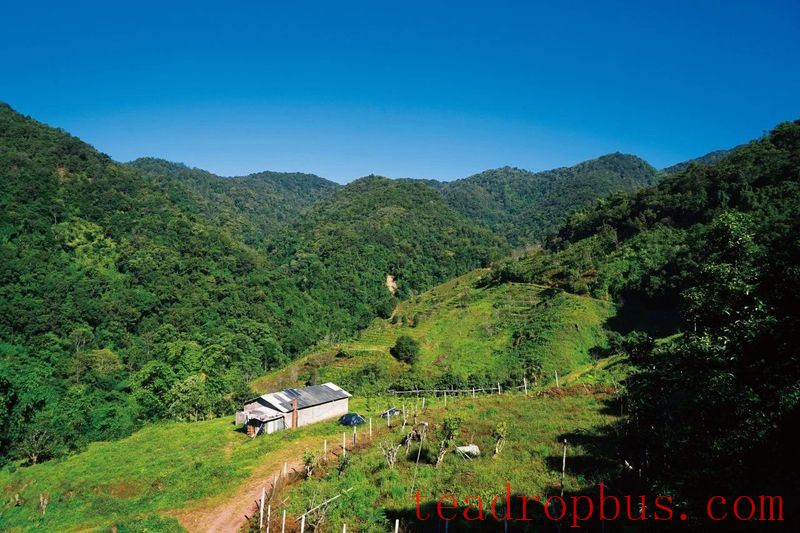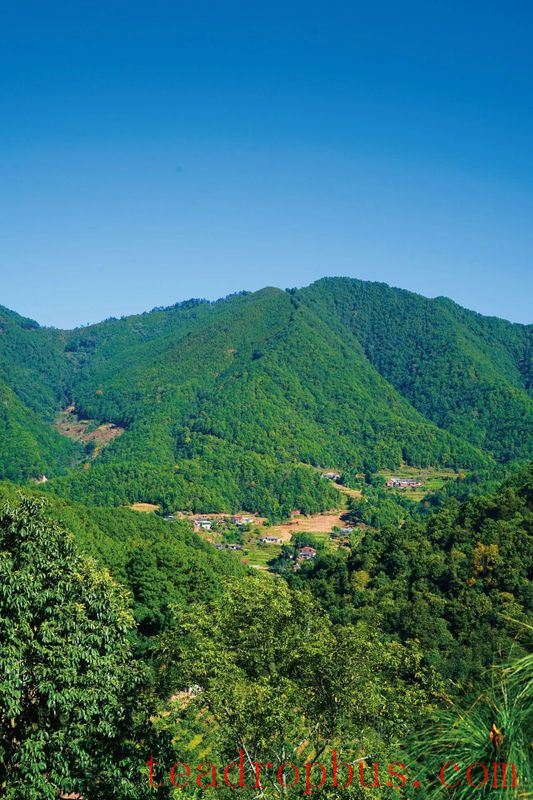
Upon my first taste of Lao Haitang, I sipped gently and let the clear Tea broth slide down my throat, as its aroma Rose on my tongue, permeating from my tongue through to my nostrils. This is a refreshing and grand fragrance, fragrant in an optimistic and distinct manner. If there were an eye in one's mouth, this aroma would allow you to see the face of a cheerful man flashing past with a smile, reminiscent of Gu Long's nearly perfect character – “Fragrant Commander” Chu Liuxiang.
“I've heard that you have a jade beauty sculpted exquisitely, displaying the utmost grace; I cannot help but yearn for it deeply. Tonight at midnight, I shall come under the moon to fetch it. You are always so refined and understanding, surely you will not let me make this journey in vain.” A pale blue note, carrying a faint scent of iris that has remained untainted by the dust of time for thousands of years, unfolds gently in our memories. What we can never forget is Chu Liuxiang's face, untouched by the vicissitudes of life.
Upon my first taste of Lao Haitang, these verses reappeared in my mind alongside the curling tea aroma. I sipped gently and let the clear tea broth slide down my throat, as its aroma rose on my tongue, permeating from my tongue through to my nostrils. This is a refreshing and grand fragrance, fragrant in an optimistic and distinct manner. If there were an eye in one's mouth, this aroma would allow you to see the face of a cheerful man flashing past with a smile, reminiscent of Gu Long's nearly perfect character – “Fragrant Commander” Chu Liuxiang.
The elevation and perspective rise continuously. Departing from Anban Town, it takes about an hour or so to reach the Lao Haitang tea area. From afar, one can see a hazy main peak, which is the summit of Dayingpan Mountain, standing at an altitude of 2,260 meters, part of the Wuliang mountain range. The ancient Lao Haitang tea mountain grows on Dayingpan Mountain, encompassing five village committees: Waqiao, Li's Family, Chahai, Tiandam, and Victory. The terrain undulates along the way, with beautiful greenways winding through the mountains, and sloping tea mountains begin to appear in large patches, their forms far more natural and diverse than human description or imagination can capture.
History of Lao Haitang
The Lao Haitang ancient tea mountain, located in the Wuliang mountain range, is one of the twenty-five ancient tea mountains in Pu'er. Ancient tea trees are scattered throughout the mountains, occasionally mixed with forests and farmland, covering over a thousand acres. These tea trees, some of which are between one hundred and eight hundred years old, form the tea mountain. The Lao Haitang tea garden is located in the Waqiao Village of Tianba Township in Zhenyuan County, named after the place. It stands at an altitude ranging approximately from 1,619 to 1,860 meters, often shrouded in clouds and mist. The average annual temperature in the high mountains is 16°C, and the Lancang River constantly nourishes this land, providing it with an excellent natural ecological environment.

The history of the Lao Haitang tea area is long. This tea area is named after a vast lake resembling the sea. The earliest inhabitants can be traced back to the 14th year of the Hongwu period of the Ming Dynasty (1381). According to the weathered inscriptions on the tombstone of Ai Ruyi in Haitang and the family records left by the four major surnames—Fang, Ai, Ye, and Dao—the Jiangxi natives surnamed Ai, Fang, Ye, and Dao moved together to this remote Lao Haitang to escape war in the tenth year of the Yongle period of the Ming Dynasty (1413). At that time, deep forests were the first choice for ordinary people to avoid wars, epidemics, and taxes. For the people from Jiangxi who lived by the water since childhood, this lake like a sea reminded them of home, and they stayed. They also brought advanced Central Plains culture into this unexplored land.
They cultivated fields, scattered tea seeds, and began planting tea on a large scale. In the Yongzheng era of the Qing Dynasty (1723 AD), salt deposits were discovered locally, and the trade in salt and tea flourished here. In the seventh year of the Yongzheng era, Lao Haitang tea was transported via horse caravans to Kunming, Tibet, and even the capital, gaining some fame and becoming a local specialty. The caravans brought back praise from Emperor Yongzheng: “The tea comes from Haitang, yellow in color, sweet in taste, gentle yet wild, truly remarkable tea.” Afterward, Lao Haitang tea stood out, becoming the most famous tea in Zhenyuan.
In the Republican era, Ai Fuming, a prominent local landlord in Lao Haitang, introduced a large number of Mengku tea varieties from Jinggu County to cultivate in Haitang, expanding the area of Lao Haitang tea cultivation. Today, the Lao Haitang ancient tea mountain has 1,150 mu of cultivated ancient tea trees, all over a century old, with the oldest being around 800 years. Additionally, there are 4,000 mu of ecological tea gardens, planted in recent decades.
A Gentleman, Pure and Elegant as Jade
At the tea factory of Fang Kaiming, a descendant of the Fang family in Lao Haitang—Zhenyuan Fang's Old Haitang Ancient Tea Co., Ltd.—we enjoyed a cup of pure Lao Haitang ancient tea he personally brewed in the serene and elegant tea room, leading to the scene described earlier. Fang Kaiming said that Lao Haitang was once praised as the “Princess of Pu'er” due to its sweet aroma. At this moment, tasting the tea, one feels a stirring sensation, like a righteous hero in the martial world, possessing both grace and chivalrous sentiment. One senses the true essence and integrity of the tea, far from the demeanor of a delicate woman. The lingering fragrance in the cup after drinking is long-lasting and reluctant to dissipate, and in the martial world, only Chu Liuxiang's image best fits the taste of Lao Haitang.
As the most dashing “Fragrant Commander” in Zhenyuan, such a unique person could only be nurtured by a special environment. The core area of the ancient tea garden is in the Lao Haitang group of the Waqiao Village Committee. Therefore, it is collectively known as the Lao Haitang ancient tea mountain. Many of the tea gardens are located near villages, mixed with farmland. The largest tree is a cultivated ancient tea tree in Potou Mountain, Tianba Village, growing at an altitude of 1,925 meters. It stands 4.5 meters tall, with a trunk circumference of 172 centimeters, and is nearly a thousand years old. Overall, the ancient tea gardens are neatly arranged and well-organized, not densely packed, reflecting the ancient agricultural wisdom of the ancestors here, which still influences their descendants today.
Fang Kaiming brewed us tea from the first spring of 2025, which exudes an indescribable wild honey fragrance. “Only in the mountains and waters can the essence be developed,” fragrance is just the basic condition, above it is clarity, then sweetness, and finally vitality. Strolling through the tea gardens of Lao Haitang, breathing in the scent of Yunnan pines, surrounded by dense mid-mountain evergreen broad-leaved forests such as Sichuan oak, Castanopsis, Machilus, Chinese birch, and water calabash, one can discern understory plants like photinia, acanthopanax, and rhododendron, as well as rich mosses, ferns, and microorganisms. “The tea variety here is native to Jingdong and Zhenyuan counties in Yunnan, a hybrid of wild and cultivated tea trees, with a history of several hundred years of cultivation. This variety is very distinctive, with tall plants, semi-open growth habits, prominent main trunks, dense branching, obliquely upward or horizontally arranged leaves, dark green leaves, and robust buds,” he explained while brewing the tea.